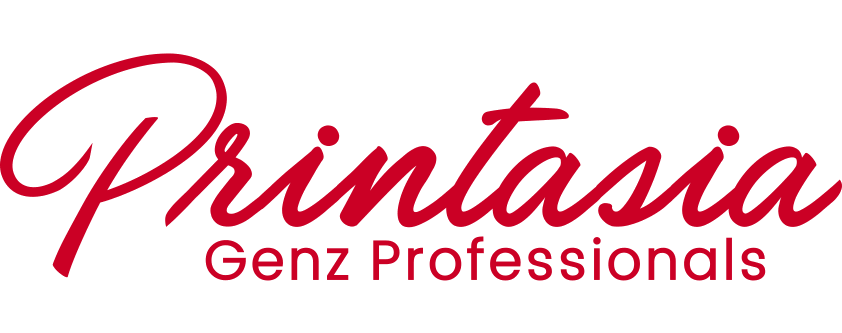Top Design Elements to Include in Your Construction Business Card
In the construction industry, effective branding is essential to stand out in a competitive market. Your business card serves as a powerful tool for making a strong first impression and communicating your brand identity. In this blog, we will explore the key design elements to include in your construction business card to ensure it effectively represents your company and leaves a lasting impact on potential clients and partners.
The Importance of a Well-Designed Construction Business Card
A well-designed construction business card is more than just a piece of paper with your contact information. It's a reflection of your company's professionalism, expertise, and commitment to quality. Here's why a well-designed business card is crucial in the construction industry:
- First Impressions: Your business card is often the first point of contact between your company and potential clients or partners. A well-designed card can make a strong and positive first impression, setting the tone for future interactions.
- Brand Identity: Your business card is an extension of your brand. It should reflect your company's values, mission, and unique selling points. Consistency in design across all your marketing materials, including business cards, reinforces your brand identity.
- Credibility: A professionally designed business card conveys that your company is credible and reputable. It reassures potential clients that they can trust your services.
- Contact Information: While design is crucial, the primary function of a business card is to provide essential contact information. It makes it easy for potential clients, partners, or associates to reach out to you.
- Marketing Tool: Your business card can serve as a marketing tool. It can showcase your company's expertise, highlight key services, and even include calls to action, encouraging potential clients to visit your website or request a quote.
Top Design Elements for Your Construction Business Card
Now, let's explore the essential design elements that you should include in your construction business card to make it effective and memorable:
1. Company Logo
Your company logo is the cornerstone of your brand identity. It should be prominently displayed on your business card. Ensure that it's high-resolution and clear. The logo should be the same across all your marketing materials for consistency.
2. Contact Information
Include all relevant contact information, such as your company name, your name, job title, phone number, email address, and physical address. Make sure the text is legible, and consider using a larger font size for the most important details.
3. Tagline
A concise and memorable tagline can effectively convey your company's mission or unique selling proposition. It provides a quick snapshot of your brand identity and what your company stands for.
4. Images and Visuals
Incorporate images or visuals that relate to the construction industry. These could include photos of completed projects, construction equipment, or architectural details. Images can make your card more visually appealing and reinforce your expertise.
5. Color Scheme
Select a color scheme that aligns with your company's branding. The colors you choose should be consistent with your logo and other marketing materials. Keep in mind that certain colors can convey different emotions, so choose wisely.
6. Typography
Use legible fonts for all text on your business card. Avoid overly decorative or difficult-to-read fonts. Consistency in typography across your branding materials is key to maintaining a professional image.
7. White Space
White space, or negative space, is the empty space around the design elements on your card. Adequate white space ensures that the card is not cluttered and that important information is easy to read.
8. Quality Printing
Invest in high-quality printing for your business card. The printing quality can significantly impact the visual appeal of your card. Choose a printing company that can produce sharp, clear images and text.
9. QR Code
Incorporate a QR code that links to your website or a specific landing page. This allows potential clients or partners to easily access more information about your company, view your portfolio, or request a quote.
10. Social Media Icons
Include icons or links to your company's social media profiles, such as Facebook, Twitter, or LinkedIn. This can encourage people to connect with your company on various platforms, enhancing your online presence.
11. Services Offered
Briefly mention the primary services your company offers. This can help potential clients quickly understand what your company specializes in and whether it aligns with their needs.
12. Call to Action
Consider adding a call to action, such as "Visit Our Website" or "Request a Free Consultation." This encourages recipients to take the next step in engaging with your company.
Building a Strong Brand Identity in the Construction Industry
Your construction business card is just one piece of the branding puzzle. To build a strong brand identity in the construction industry, you should also consider the following:
- Company Website: Ensure that your website reflects your brand identity, is user-friendly, and showcases your portfolio of work.
- Consistency: Maintain consistent branding across all marketing materials, including your website, social media profiles, brochures, and business cards.
- Client Testimonials: Highlight positive client testimonials on your website and marketing materials to build trust and credibility.
- Professional Photography: Use high-quality, professional photography of your completed projects on your website and in marketing materials.
- Online Marketing: Invest in online marketing to increase your online presence, including search engine optimization (SEO) and pay-per-click advertising.
- Professional Associations: Join industry-related professional associations to enhance your credibility and network with peers.
Conclusion
Your construction business card is a valuable tool for making a strong first impression, building trust, and communicating your brand identity in the construction industry. By incorporating the essential design elements and maintaining consistency across all your marketing materials, you can effectively represent your company and set the stage for successful client relationships and business growth. Remember that your business card is a reflection of your brand, so make it count in every interaction.










